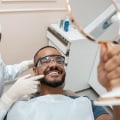Ionizing radiation has been a major contributor to the advancement of healthcare. However, the potential risks of radiation-based medical imaging have been a cause for concern in recent years. While this is beneficial in terms of critically evaluating and optimizing diagnostic imaging procedures, it can lead to the misconception that radiation is the only risk associated with medical imaging. Unlike the expression of radiation risks, the quantitative estimates of the benefits of medical imaging are markedly deficient.
The expression of benefit in qualitative terms versus the expression of risk in quantitative terms can lead to a biased judgment by health professionals and the public about the benefits and relative risks of medical imaging. Therefore, this article quantitatively compares the benefits of diagnostic imaging in several cases, based on actual mortality or morbidity data if ionizing radiation were not used, with the linear model without thresholds obtained. To minimize medical exposure to radiation, it is important to consider if the results of a scan or test are likely to change the course of treatment. Radiation experts believe that if imaging tests increase the risk of cancer, the increase in risk is likely to be very small.
The amount of radiation exposure from an imaging test depends on the imaging test being used and the part of the body being tested. Restraining a child for imaging procedures is generally more traumatic for parents than for the patient. It is difficult to know how exposure to radiation from imaging tests might increase a person's risk of cancer. For approximately the past decade, there have been reports on the possible harmful effects of medical radiation, assuming that there is no risk-free level of exposure to radiation and only recommending medically necessary imaging tests.
By keeping a record of medical images, it is possible to track one's own history of diagnostic imaging tests and share it with healthcare providers. Radiologists can help diagnose diseases such as appendicitis, pneumonia, trauma effects or cancer in children by reading medical images of the body. A pediatric radiologist is another doctor who “sees” children, although often not in person, but by analyzing their X-ray images. Most people in the United States have benefited from imaging tests such as chest X-rays, bone X-rays or CT scans.
The chance of increasing cancer risk due to medical tests that use radiation is small, so there is no reason to give up an imaging test or an x-ray-assisted procedure that could improve one's health or extend their life.






